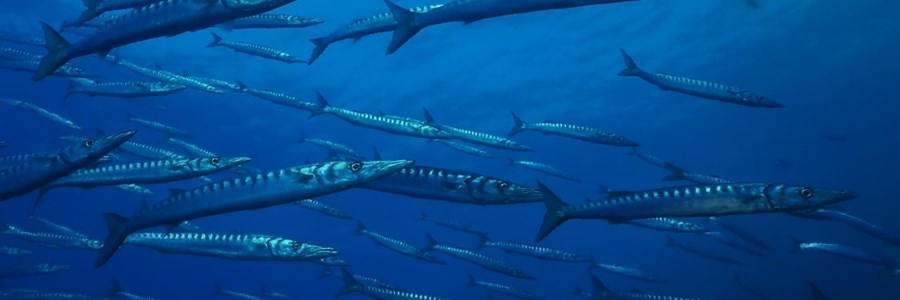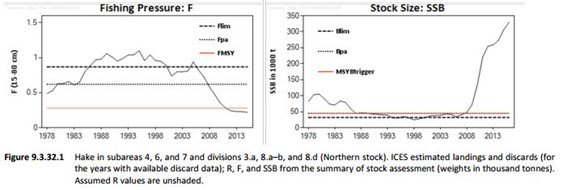Histoire de réussite pour les pêches et les politiques européennes

Le Comité scientifique, technique et économique européen pour la pêche (STECF) a récemment publié son rapport annuel sur l'exécution de la politique commune de la pêche (PCP) en ce qui concerne les progrès réalisés dans la situation des stocks de poissons et les niveaux d'exploitation. Des décennies d'autosacrifice renvoient nos pêches à la grandeur, car le rapport montre clairement que l'état des stocks s'améliore considérablement. Cela reflète également une tendance générale à la baisse de la pression de pêche. Cependant, des efforts supplémentaires sont encore nécessaires, en particulier en Méditerranée.
The STECF is the European Commission's scientific body which provides independent scientific advice and supports the implementation of the CFP. This enables policy-makers to build their decisions on robust and sound knowledge about the level of exploitation that fish stocks can sustain as well as effects of fishing on marine ecosystems.
STECF report evidences positive trends in many fish stocks across Europe. For instance, when stating that amongst the almost 70 stocks fully assessed, the proportion of overexploited stocks decreased from more than 70% to close to 40% over the last ten years. In addition, the report points out that the proportion of the assessed stocks outside the safe biological limits follows the same decreasing trend, from 65% in 2003 to 38% in 2015.
Concerning the exploitation rates of fish stocks, the STECF report also brings good news since around half of the stocks assessed have reached sustainable levels, in line with the objectives set in the CFP, well before the deadline given (i.e. before 2020). As regards the trend in biomass, the report shows improvement in all EU waters, with the exception of the Mediterranean and Black sea. For the fully assessed stocks, the biomass ratio in 2015 is around 35% higher than in 2003.
President of Europêche, Javier Garat stated: “Many stocks in Europe have recovered and currently delivering sustainable catches. This is not a coincidence or a fortunate accident; it came at the expense of the many efforts made by the fishing industry, which respected stringent TACs and suffered a strong reduction of fleets. Just to give an example, despite the enlargements of the EU, the number of EU vessels in 2015 was 85 154; 18 693 fewer than in 1996. We welcome that these sacrifices are paying off and result in higher catches, better economic performance and reduction of fuel consumption. We are not complacent though, the fishing sector looks forward to continuing its close collaboration with scientists, governments and the European Commission to increase the number of fish stocks at sustainable levels, improve knowledge on data deficient stocks, minimise any possible impact on the environment and operate within the limits set in the CFP.”
Garat continued: “As far as the Mediterranean is concerned, while acknowledging the delicate state of the stocks, the fishing sector has taken the lead on the recovery of the Mediterranean together with the EU, scientific community and governments. The spectacular recovery of bluefin tuna, whose quota has been increased by 20% every year, is an illustrative example of the high potential for recovery.”
President of EAPO, Pim Visser declared “The STECF report shows the very good status of most of our target stocks. Numerous successful stories are found in many fisheries in the North East Atlantic as reflected in the graphs annexed to this press release. The fisheries of many of these stocks are certified under the MSC standard which in itself is proof of the healthy status and the sound management of these stocks. A very remarkable example is the Plaice in the North Sea, also MSC certified, which counts with the highest level of biomass ever reported (226.008 tonnes in 2002 compared to945.709 tonnes in 2016). The report also shows the need to improve factual knowledge of high quality on stocks which have not been studied in detail so far. In this day and age, proxy approaches of limited quality no longer suffice.”
* The graphs below illustrate the extreme reduction of fishing pressure (left column) and the successful recovery (right column) of some emblematic fish stocks in the NE Atlantic (Hake, Cod, Herring and Saithe respectively).[1]




[1] ICES Advice 2016
Ends
Europêche represents the fisheries sector in Europe. Currently, the Association comprises 15 national organisations of fishing enterprises from the following 10 EU Member States: DE, DK, ES, FR, IT, MT, NL, LV, PL, UK.
Press contacts:
Daniel Voces, Acting Managing Director of Europêche: +32.2.230.48.48 daniel.voces@europeche.org
Sources: Europeche
Tags: STECF, CIEM, surpêche, stocks, Commission européenne, morue, hareng, thon rouge, merlu, PCP, mer du Nord, méditerranée, Atlantique